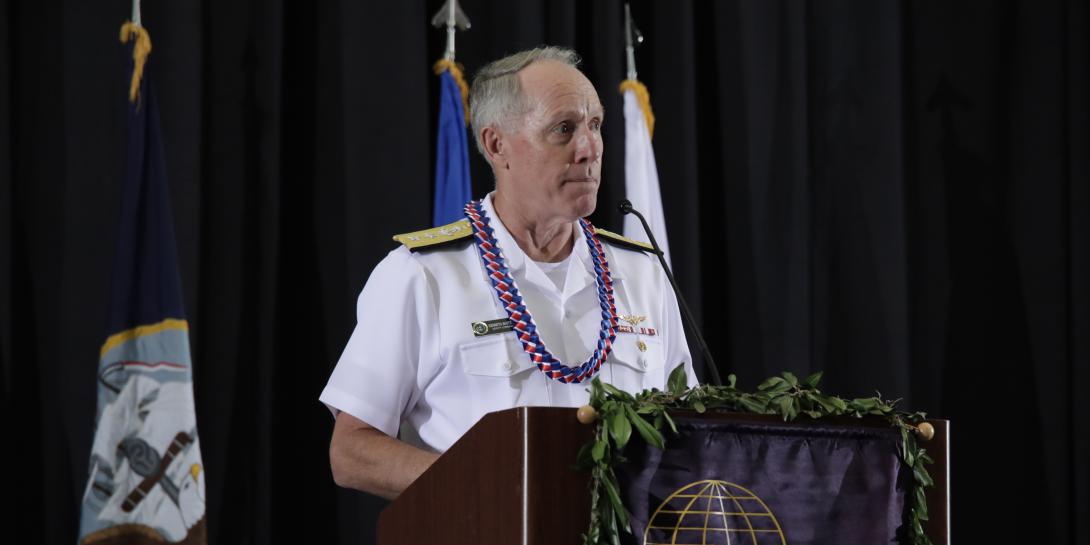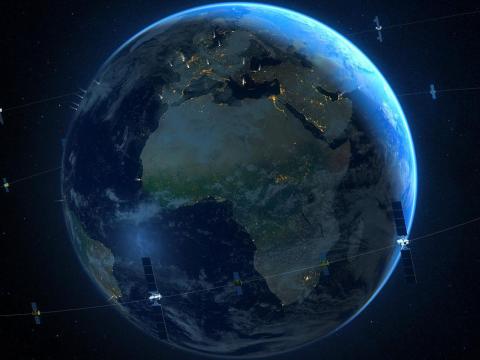Adversaries Line Up to Challenge U.S. Forces in the Pacific
The U.S. Pacific Fleet is facing myriad challenges from multiple nations as it seeks to maintain force superiority in the Indo-Pacific area of operations (AOR). What once was science fiction is now science fact, and technology leaps that used to be the purview of the United States now are blossoming in nations with an eye on global hegemony.
The deputy commander of the U.S. Pacific Fleet, Rear Adm. Kenneth Whitesell, USN, described the situation the fleet faces in the final luncheon address at TechNet Indo-Pacific 2019, held November 19-21 in Honolulu. While the vast size of the Indo-Pacific AOR has not changed, the environment has shifted dramatically.
We’d like to have more assets; three of five of our adversaries are in this AOR. If something does kick off, a flow of forces to the AOR as planned would happen.—Rear Adm. Kenneth Whitesell, USN, deputy commander, @USPacificFleet #AFCEATechNet
— Bob Ackerman (@rkackerman) November 21, 2019
“Three of the five threats to this country are located in this AOR,” the admiral noted.
At the top of that adversary roster is China, which is pursuing leap-ahead advances in artificial intelligence (AI) that would allow it to seize superiority over the United States.
“Traditionally, technology has provided the U.S. military with overwhelming superiority over adversaries,” Adm. Whitesell stated. “Clearly these days have faded.”
The admiral also decried China’s approach to international relations. “Especially disturbing is the Chinese government’s ambivalence to being caught,” he said. “As China constructs its space silk road similar to the maligned belt and road initiative, the same threats must be shown to the world to judge.”
Especially disturbing is the Chinese government’s ambivalence to being caught.—Rear Adm. Kenneth Whitesell, USN, deputy commander, @USPacificFleet #AFCEATechNet
— Bob Ackerman (@rkackerman) November 21, 2019
Hard work and a commitment toward reversing its comparative decline are well within U.S. forces' reach, he continued. Navy recruits today spend an average of three hours a day using electronic media, which equips them well for the technology future. And technologies such as AI, the Internet of Things and the cloud mean the future has arrived, he said.
The Pacific Fleet “has gone back to school,” and learned new lessons, he remarked. “The new three Rs are resilient, redundant and reconstitutable command and control.”
The new three Rs are resilient, redundant and reconstitutable command and control.—Rear Adm. Kenneth Whitesell, USN, deputy commander, @USPacificFleet #AFCEATechNet
— Bob Ackerman (@rkackerman) November 21, 2019
Meanwhile, the Pacific Fleet continues to carry out exercises to help prepare for future contingencies. This approach helped the fleet recover from the early dark days of World War II and turn the tide of battle. The admiral offered that the fleet has what it needs for its current operational needs.
“We’d like to have more assets,” he admitted. "But if something does kick off, a flow of forces to the AOR as planned would happen."





Comments